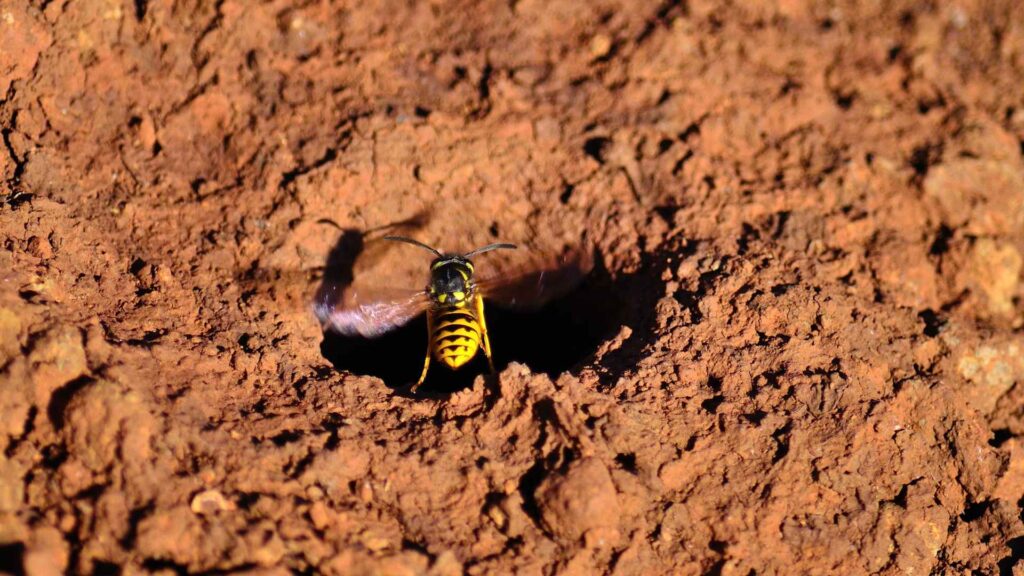Table Of Content
ToggleEver come across a strange little mound of dirt with a hole in the center in your yard? That might be an underground wasp nest!
Let’s delve into the world of these hidden wasp dwellings and how to deal with them safely and effectively.

An underground wasp nest is a home built by various wasp species, burrowed into the ground. These nests consist of a network of tunnels and chambers constructed from chewed-up soil and saliva. Common wasp culprits include yellow jackets, bald-faced hornets, and cicada killers.
These wasps prefer underground nesting for a few reasons. The soil provides excellent insulation, protecting the developing brood from extreme temperatures. Additionally, the underground environment offers natural protection from predators and harsh weather conditions.
If you suspect an underground wasp nest in your yard, here are some key signs to look for:
Discover safe wasp control solutions for your home.

Ground-nesting wasps, like yellow jackets, can be quite aggressive, especially if their nest is disturbed. Their stings can be painful and pose potential health risks:
Safety First! Before attempting any DIY removal methods, ensure you create a wasp-proof barrier between you and the nest. Here’s what you’ll need:
Timing is Key: Early evening, when wasps are less active, is the safest time for removal. Avoid attempting this during the day, especially on hot days when wasps are more agitated.
Learn more about our eco-friendly wasp removal methods.
Important Note: These DIY methods are only suitable for small nests. If you’re dealing with a large nest, a heavily populated nest, or if you’re uncomfortable with these methods at all, contact a professional pest control service. They have the expertise and equipment to handle the situation safely and effectively.
Safety Tips During and After Removal:
Schedule a wasp inspection with our experts today.
Here are some additional things to keep in mind for safe and effective underground wasp nest removal:
Prevention is always better than cure! Here are some ways to discourage wasps from setting up shop underground in your yard:
Get a free quote for professional wasp nest removal.
As a pest control expert, I strongly advise addressing underground wasp nests promptly. Early action minimizes the risk of stings and ensures a safer environment for your family and pets.
Remember, with the right knowledge and precautions, you can effectively deal with wasp problems and keep your yard a wasp-free zone!
To destroy an underground wasp nest, you should use protective gear and apply insecticidal dust or soapy water directly into the nest entrance during the early evening when wasps are less active. This ensures that most wasps are inside the nest, making the treatment more effective and reducing the risk of being stung.
Common types of wasps that nest underground include yellow jackets, bald-faced hornets, and cicada killers. These species prefer the protection and insulation that the soil provides, helping to regulate temperature and safeguard their colonies from predators and harsh weather conditions.
Yes, underground wasps can sting and are often more aggressive when their nest is disturbed, posing a significant risk to humans and pets. Their stings can be painful and potentially dangerous, especially for individuals with allergies to wasp venom or when multiple stings occur.
Animals such as skunks, raccoons, and badgers may dig up ground wasp nests in search of larvae to eat. These animals are attracted to the protein-rich larvae and are willing to brave the wasps’ stings to access this food source.
Your trusted pest control experts in Southern California. Keeping your neighborhood pest-free!